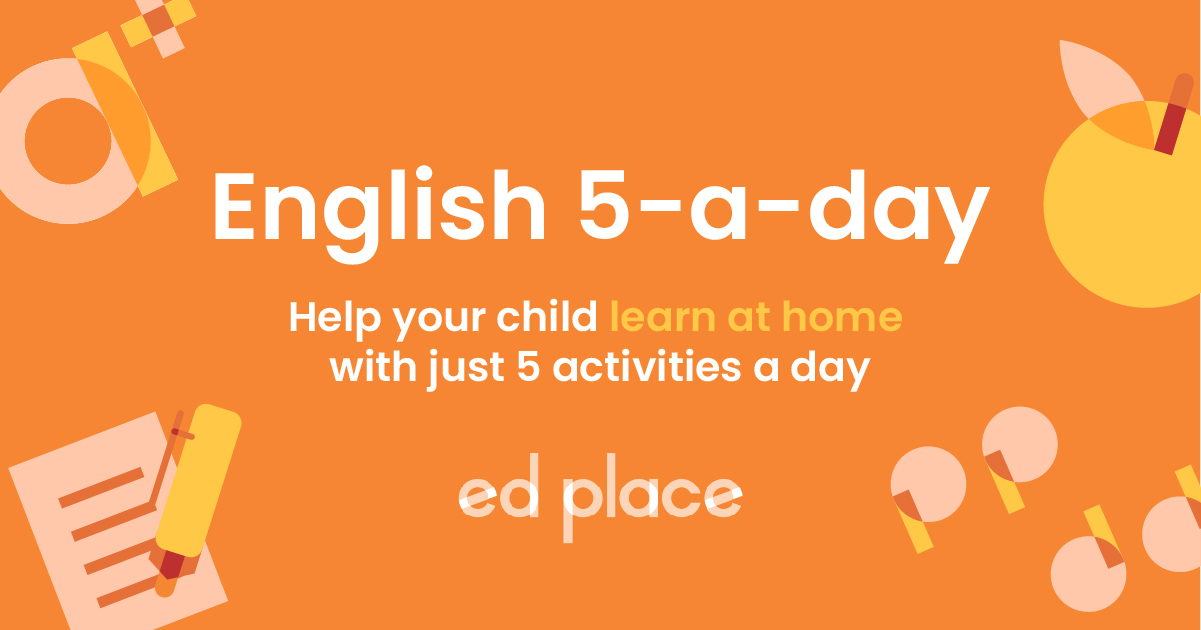
EdPlace's Year 9 Home Learning: Understanding Shakespeare
Looking for short lessons to keep your child engaged and learning? Our experienced team of teachers have created English, maths and science lessons for the home, so your child can learn no matter where they are. And, as all activities are self-marked, you really can encourage your child to be an independent learner. Get them started on the lesson below and then jump into our teacher-created activities to practice what they've learnt. We've recommended five to ensure they feel secure in their knowledge - 5-a-day helps keeps the learning loss at bay (or so we think!). Are they keen to start practising straight away? Head to the bottom of the page to find the activities.
Now...onto the lesson!
Understanding Shakespeare
To coin a well-known expression from Julius Caesar, “it was Greek to me”. And this is how children can sometimes feel when faced with a lengthy Shakespeare passage full of ‘thou’s’, ‘thy’s’ and ‘doth’s’. The key to engagement with Shakespeare is to demonstrate to children how the themes and ideas in his works are timeless.
We’re confident that if you follow the step-by-step approach below, your child will be able to:
1) Understand the relevance of the themes in a Shakespeare play
2) Identify the language techniques used in a passage
3) Explain the meaning of a passage to you (if they've really cracked it!)
Step 1: Identify Literary Devices
Before we jump into the Elizabethan era it’s important to check that your child understands what some key terminology means. Two of the most common techniques, used for comic effect by Shakespeare, are metaphors and puns.
Metaphor = a figure of speech where a word or phrase is applied to an object or action but cannot be taken literally.
Pun = a joke that relies on the different possible meanings of a word or the fact that there are words which sound alike but have different meanings.
An example of a Shakespearean metaphor which compares life to the theatre stage is: “All the world’s a stage, and all the men and women merely players.”
Another example of a Shakespearean pun is spoken after Hamlet has killed Polonius and hidden his body. The king asks where Polonius is and Hamlet replies telling him that Polonius is at supper, “not where he eats, but where he is eaten.” This means that Polonius is the supper, for the worms!
Step 2: How Should You Approach a Shakespeare Play?
When we read Shakespeare, we should first take note of any important ideas or plot points. A good play to start off with for your child is ‘A Midsummer Night’s Dream’ which is full of fairies, mix-ups and some great comedy action.
“Are you not he that frights the maidens of the villager?” – Fairy.
While this quotation may first prove troublesome to your child, ask them to pick out the words that they recognise. So, ‘frights’ looks like ‘frightens’ and ‘villager’ looks like ‘villagers’. From this, they are able to work out that this is a question to a mischievous character. A dictionary can be used for more difficult new words such as ‘maidens’.
Step 3: Getting to Grips with Language
Once your child has grasped the meaning of the text, they can then start to unpack the language and imagery used. In the following extract, Lysander describes how quickly love can disappear: “Brief as the lightning in the collied night..."
In this quotation, Shakespeare uses a couple of metaphors; love is over as quickly as the lightning flash and the blackness of the night is compared to a ‘colliery’ or coal mine. This quotation demonstrates how metaphors are vivid comparisons that bring a text to life. On Shakespeare’s stage, there were no special effects so the speech and narration had to build a striking scene in the audience's mind!
Step 4: Metaphor or Pun?
Shakespeare is often considered as top dog when it comes to using metaphor! Usually, the metaphors and puns we hear day-to-day we can easily understand. Shakespeare did use many popular metaphors, but also invented his own which can make them challenging for students to understand. So, when studying Shakespeare we need to remember that there may not be one specific 'meaning' but different interpretations and intended effects. It's helpful to focus on what the imagery implies and the tone the metaphor or pun is spoken in. These act as clues and help students understand the meaning of alien metaphors or puns.
Why not have a go at looking for metaphors and puns in the following quotations? Once you've spotted the metaphor or pun used, have a think about what they might mean and the intended impact on the reader or audience watching the play.
1) "I’ll put a girdle round about the earth in forty minutes!"
2) "Now is the winter of our discontent made glorious summer by this sun of York..."
3) "Ask for me tomorrow, you shall find me a grave man..."
4) "The course of true love never did run smooth..."
Step 5: Activities
Now, we've covered this together why not put this to the test and assign your child the following 5 activities in this order.
All activities are created by teachers and automatically marked. Plus, with an EdPlace subscription, we can automatically progress your child at a level that's right for them. Sending you progress reports along the way so you can track and measure progress, together - brilliant!
Activity 1 - Introducing Mr Shakespeare
Activity 2 - A Midsummer Nights Dream: Understand the Plot
Activity 3 - A Midsummer Night’s Dream: Understand the Characters Oberon and Titania
Activity 4 - A Midsummer's Night's Dream: Understand the Setting
Activity 5 - A Midsummer Night’s Dream: Understand the Ending
Answers
1) In this metaphor, Puck is comparing how quickly he will perform a task, saying that he could put a belt around the earth’s middle in that time.
2) The character is using this pun to refer to themselves as the ‘son’ of the house of York, but also as a bringer of sunshine.
3) This fatally wounded character uses a pun to make a joke of their imminent death with the word ‘grave’ which also means serious.
4) This metaphor suggests that love is like a troubled river.








